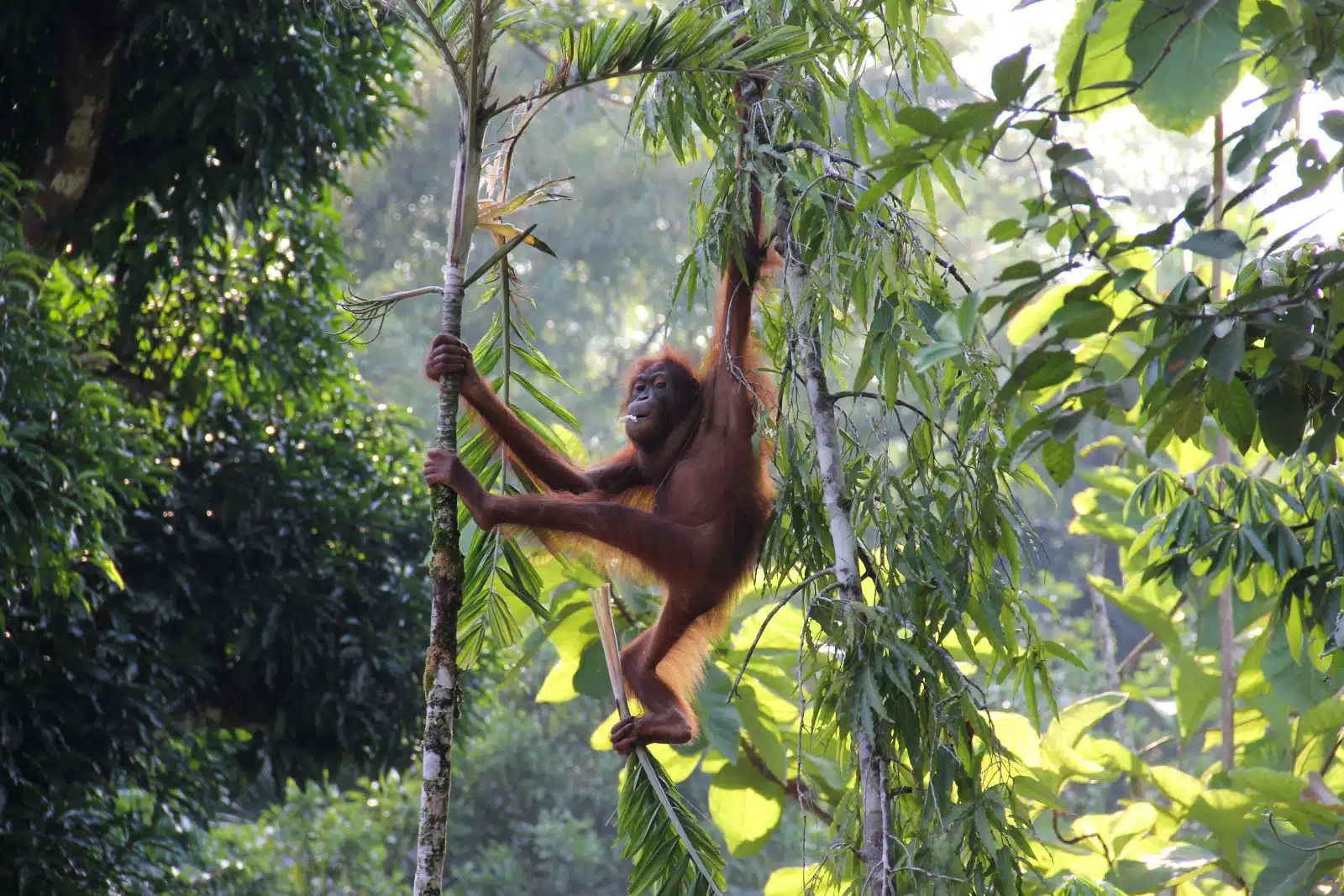The jungles of Borneo, a biodiverse haven sprawling across Indonesia, Malaysia, and Brunei, beckon adventurers, and nature enthusiasts to explore their ancient and mysterious depths. This vast island, the third-largest in the world, is home to some of the oldest rainforests, dating back over 130 million years, offering a sanctuary to many species, many of which are endemic to the region. From the iconic orangutans swinging through the canopy to the elusive pygmy elephants along the riverbanks, Borneo’s wildlife is as captivating as its diverse landscapes. This guide ventures into the heart of Borneo’s jungles, highlighting the top destinations and activities that promise an unforgettable journey into the wild, where nature’s wonders unfold at every turn.
1. Kinabatangan River
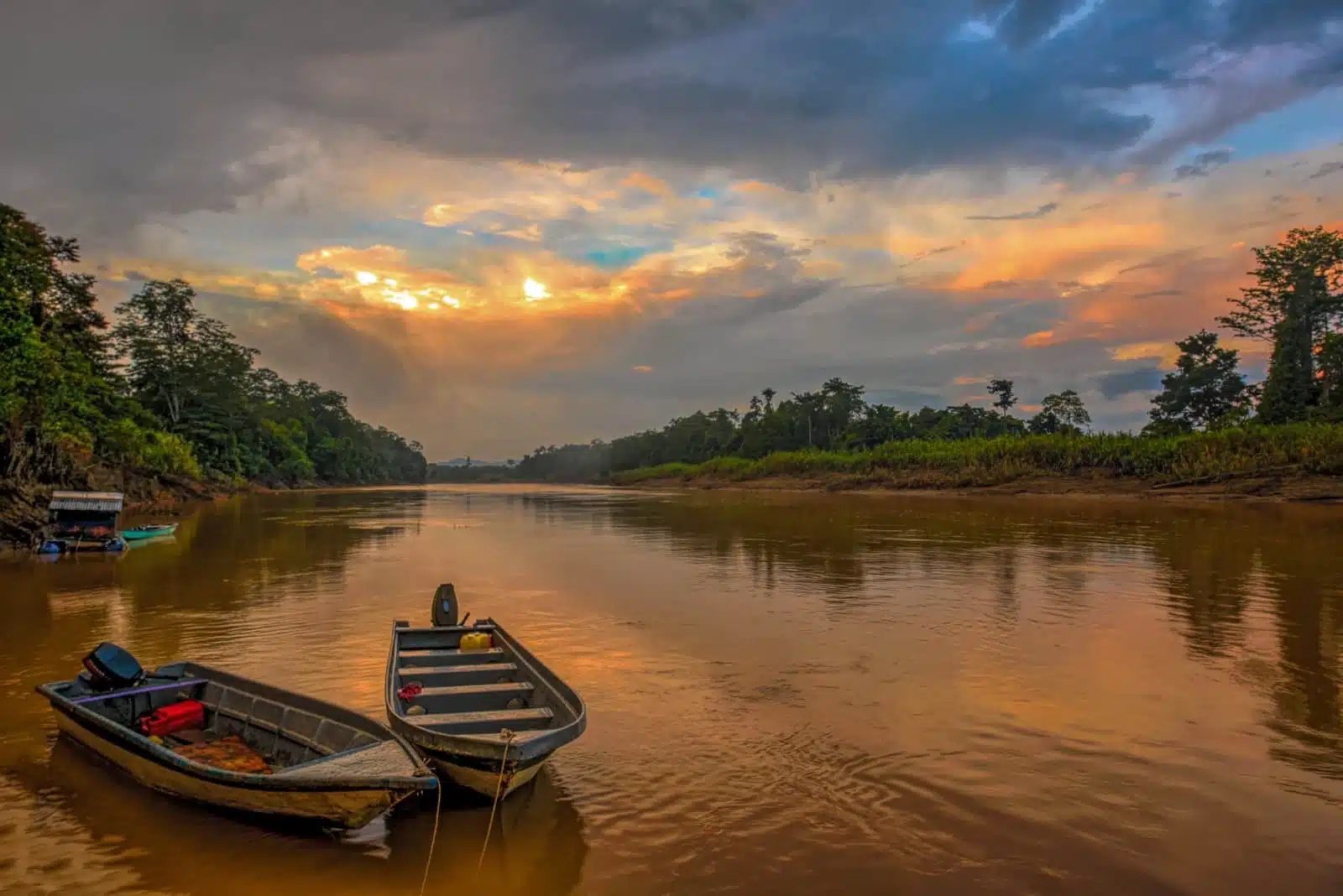
Image Credit: Shutterstock / Ryasyanskiy
The Kinabatangan River, flowing gracefully through the heart of Sabah, Malaysia, is a lifeline for the diverse ecosystems that live on its banks. This majestic river, stretching over 560 kilometers, is a sanctuary for Borneo’s most iconic wildlife. The lush mangroves, oxbow lakes, and dense rainforests along its course are home to an astonishing array of species, from the proboscis monkeys and elusive Bornean pygmy elephants to a plethora of bird species, including hornbills and kingfishers. A journey along the Kinabatangan is a journey into the wild heart of Borneo, offering intimate encounters with nature’s marvels in a setting that remains largely untouched by time. The river’s meandering path reveals the complexity and fragility of these ecosystems, underscoring the importance of conservation efforts to preserve this natural heritage.
Insider’s Tip: Opt for a multi-day stay at one of the eco-lodges along the river to fully immerse yourself in the area’s natural beauty and increase your chances of spotting a wide range of wildlife.
When to Travel: From March to October, the dry season is ideal for wildlife viewing, as animals congregate near the river.
How to Get There: Fly into Sandakan, Sabah, from Kota Kinabalu or Kuala Lumpur, and join a tour or arrange transport to the Kinabatangan River area.
2. Danum Valley Conservation Area
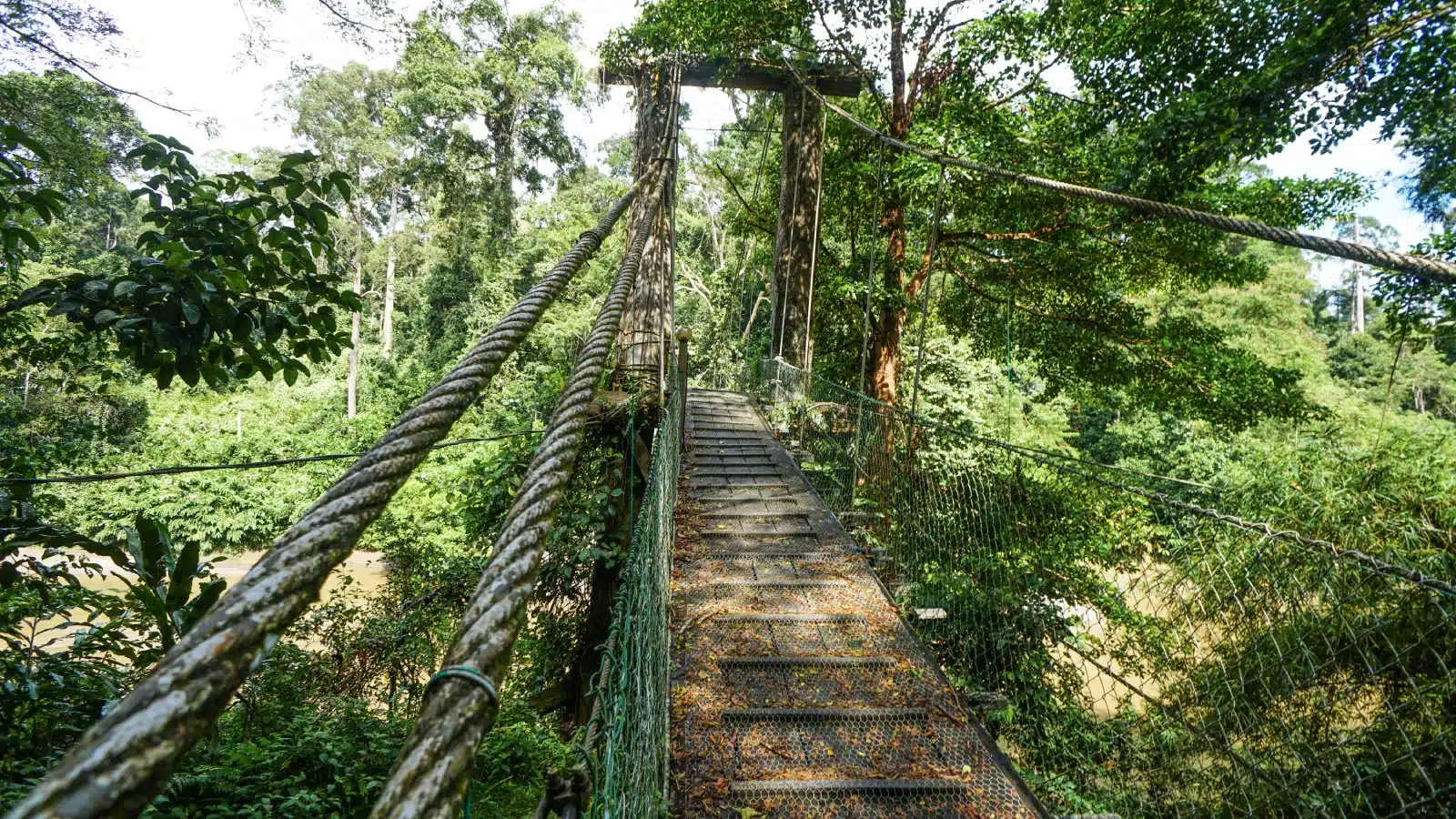
Image Credit: Shutterstock / BorneoRimbawan
Nestled in the eastern part of Sabah, the Danum Valley Conservation Area is a 438-square-kilometer oasis of primary rainforest is a testament to the ancient beauty of Borneo, untouched by logging or agriculture. It’s a realm where the dense canopy teems with life, from the majestic Bornean orangutans and elusive clouded leopards to a dazzling array of birdlife. The conservation area is not just a haven for wildlife; it’s a living laboratory for scientists and a sacred site that offers visitors profound encounters with nature. Trekking through its verdant landscapes, one is struck by the sheer scale of biodiversity and the intricate web of life that Danum Valley supports. The area’s high conservation value is evident in every corner, from the towering dipterocarp trees that dominate the skyline to the pristine rivers that carve through the valley.
Insider’s Tip: Book a night safari for a chance to see nocturnal wildlife, including tarsiers and slow lorises, in their element.
When to Travel: Avoid the wettest months from December to February; the best time to visit is between March and October.
How to Get There: Access is typically arranged through Lahad Datu, reachable by air from Kota Kinabalu. From Lahad Datu, it’s a 2-3 hour drive to the conservation area.
3. Mulu National Park
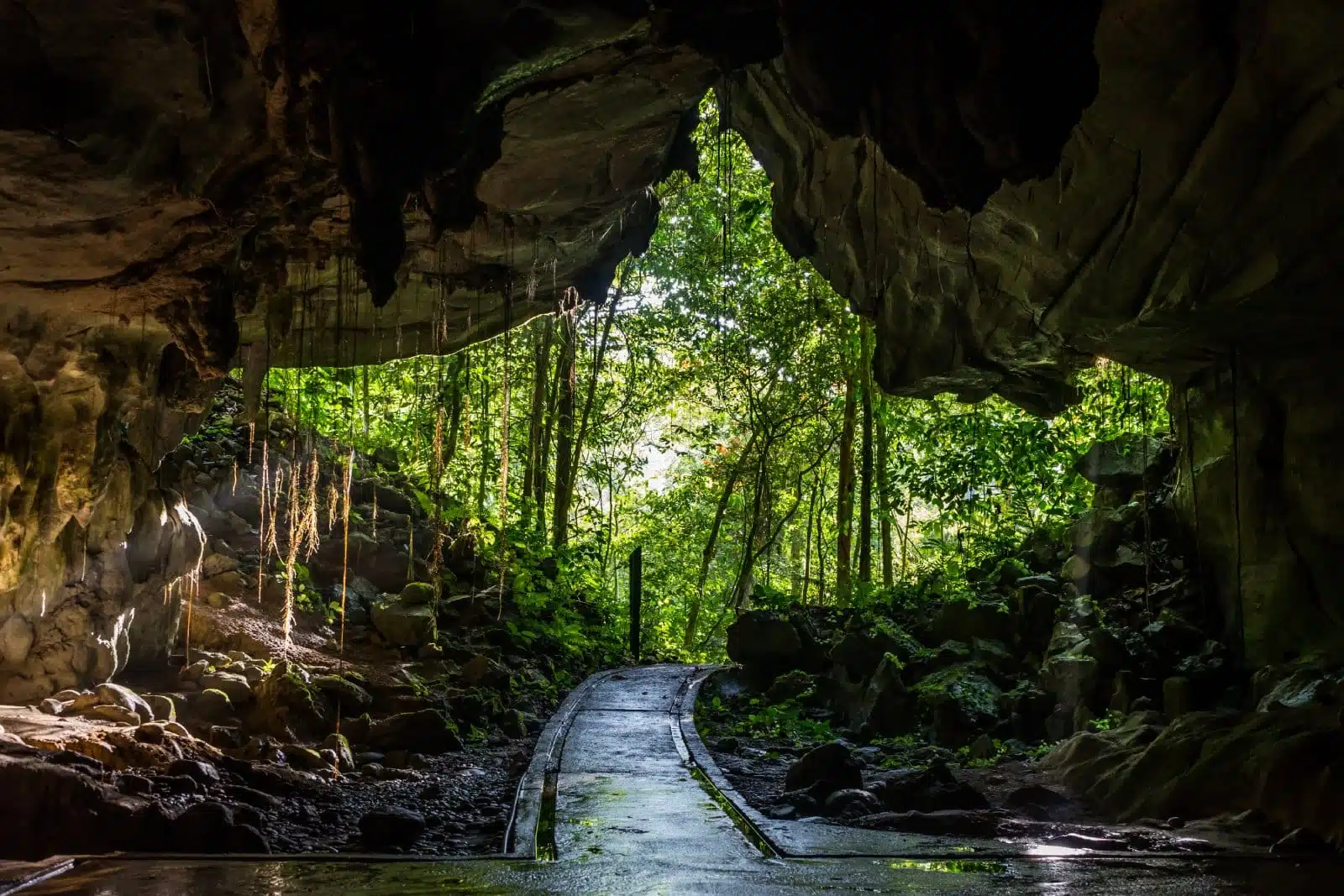
Image Credit: Shutterstock / Marvin Minder
Mulu National Park, a UNESCO World Heritage site, showcases the extensive cave systems, including the colossal Deer Cave and the enchanting Clearwater Cave, representing a subterranean world of awe-inspiring scale and beauty. Above ground, the park’s rugged karst landscapes, cloaked in dense rainforest, are a hotspot for biodiversity, supporting countless species of plants, insects, and wildlife. The challenge of the Pinnacles trek, with its razor-sharp limestone formations, offers adventurers a physically demanding but visually rewarding experience. Mulu’s unique ecosystem showcases the delicate balance of life in one of the world’s most complex and diverse habitats, making it a pivotal site for conservation and natural wonder.
Insider’s Tip: Time your visit to Deer Cave to witness the spectacular exodus of millions of bats at dusk, a natural phenomenon not to be missed.
When to Travel: The drier months from June to September are preferable for exploring the caves and trails.
How to Get There: Mulu National Park is accessible by air from Miri, Kota Kinabalu, or Kuching. The park is a short drive from Mulu Airport.
4. Bako National Park
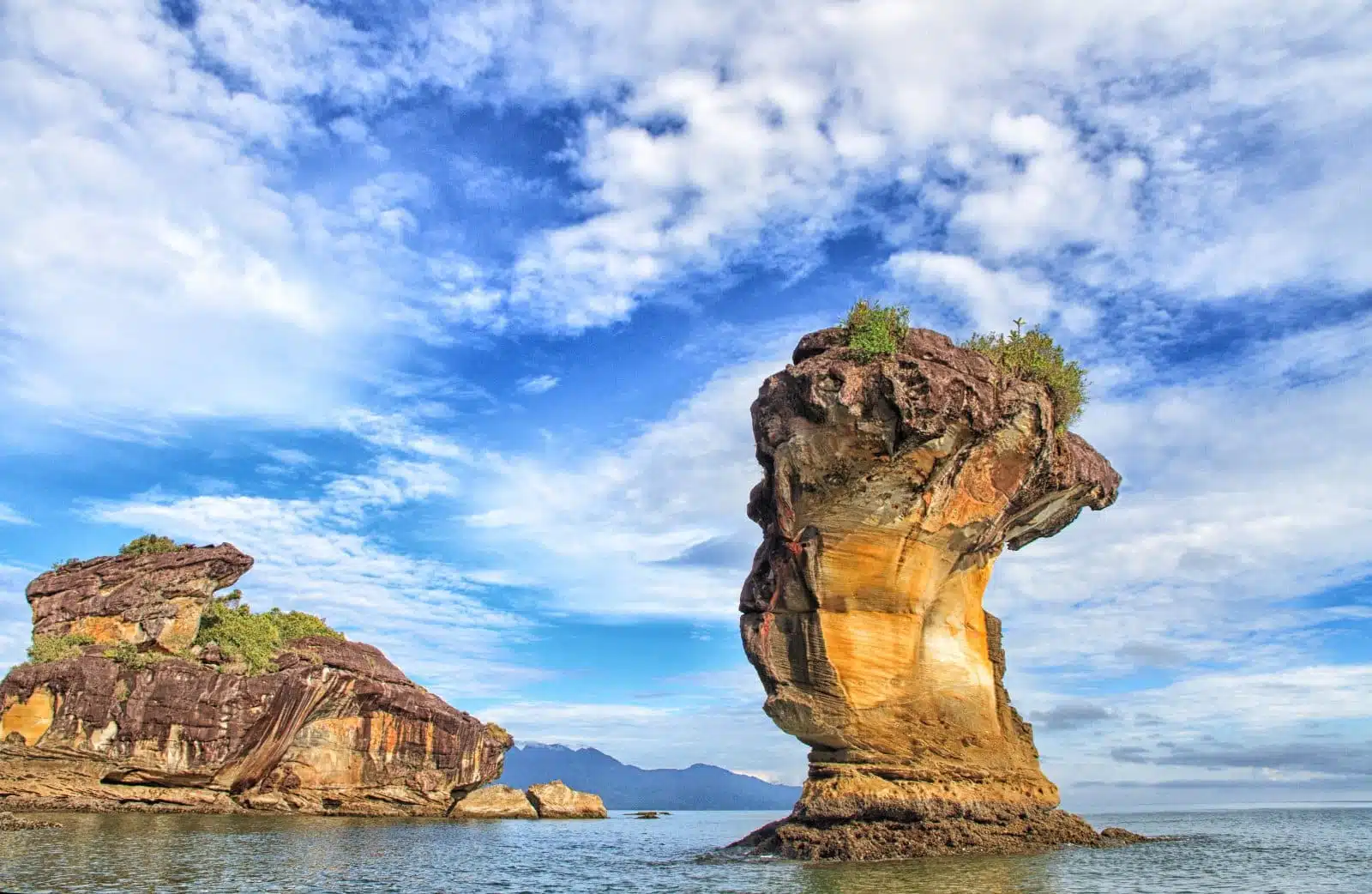
Image Credit: Shutterstock / Bakir bin Bujang
Bako National Park, Sarawak’s oldest national park, is a microcosm of Borneo’s vast ecological diversity. Despite its relatively small size, the park encompasses a range of habitats, from mangrove swamps and dipterocarp rainforests to delicate padang scrub and cliff vegetation. It’s renowned for its extraordinary wildlife, notably the proboscis monkeys, which are often seen lounging in the trees or feeding in the mangroves. The park’s coastline is sculpted into stunning sea arches and secluded coves, while its interior has trails that lead to breathtaking viewpoints and waterfalls. Bako offers visitors a condensed experience of Borneo’s natural splendors, where every turn on the trail brings a discovery, from exotic plants to rare wildlife sightings.
Insider’s Tip: Stay overnight in the park accommodations to experience the jungle’s nocturnal sounds and early morning wildlife activities.
When to Travel: The best time to visit is during the dry season from April to September.
How to Get There: Bako National Park is accessible by a short boat ride from Kampung Bako, which is about a 30-minute drive from Kuching.
5. Kubah National Park
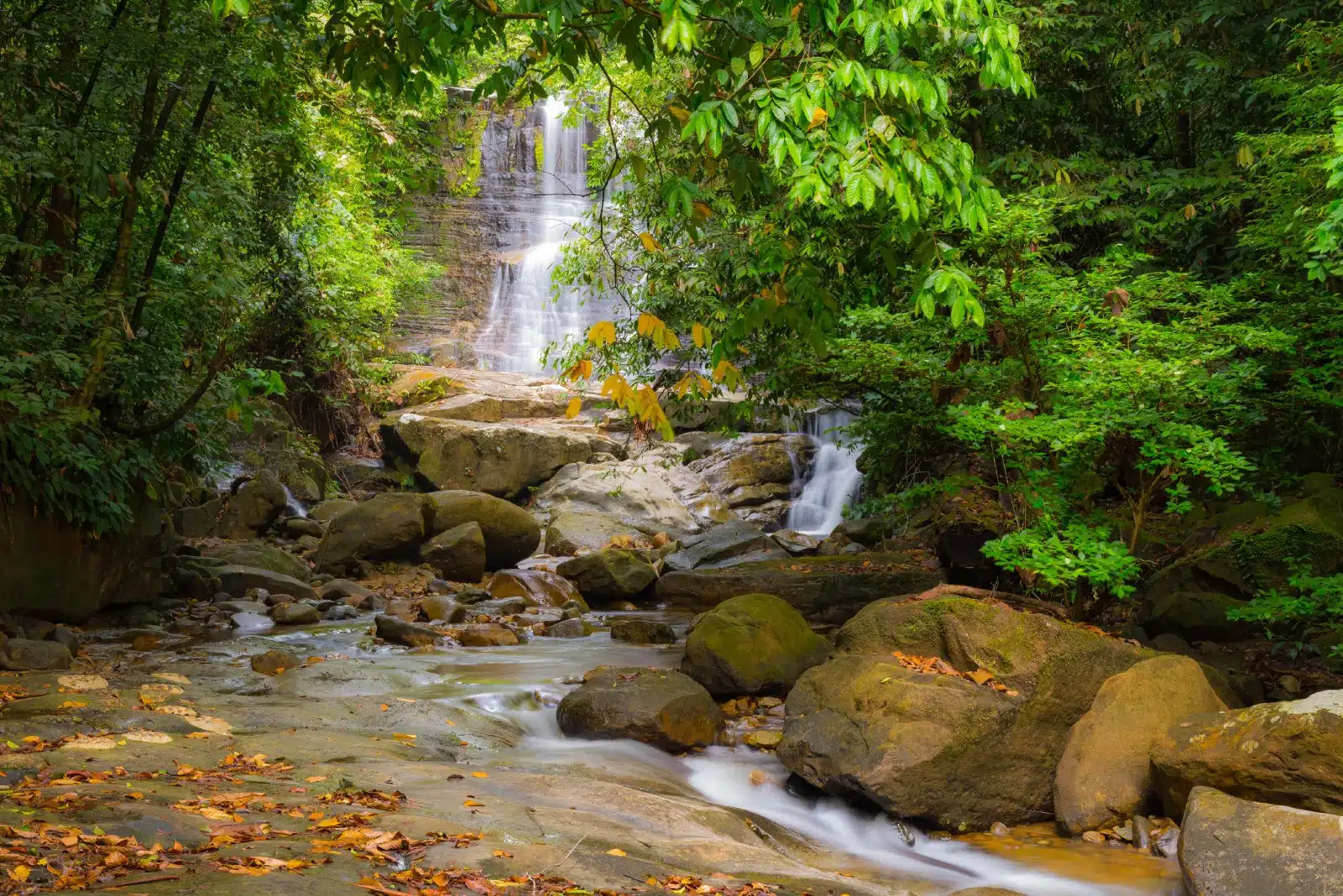
Image Credit: Shutterstock / Fabio Lamanna
Just a stone’s throw from Kuching, Kubah National Park is a verdant paradise celebrated for its rich amphibian diversity and stunning natural scenery. The park’s landscape is dominated by three mountains, draped in a lush tapestry of rainforest that hosts a spectacular array of palm species. The sounds of the forest come alive at night, with a chorus of frogs providing the soundtrack for a nocturnal adventure. The Matang Wildlife Centre within the park’s boundaries offers a chance to learn about local conservation efforts, particularly for endangered species like the orangutan. Kubah’s trails lead to serene waterfalls and bathing pools, offering a refreshing respite from the tropical heat and a chance to immerse oneself in the tranquility of nature.
Insider’s Tip: Don’t miss the night walk to see the park’s famous frogs, including the brilliantly colored Bornean horned frog.
When to Travel: The drier months from June to August offer the most comfortable trekking conditions.
How to Get There: Kubah National Park is a short drive from Kuching, with local buses and taxis available for transport.
6. Tabin Wildlife Reserve
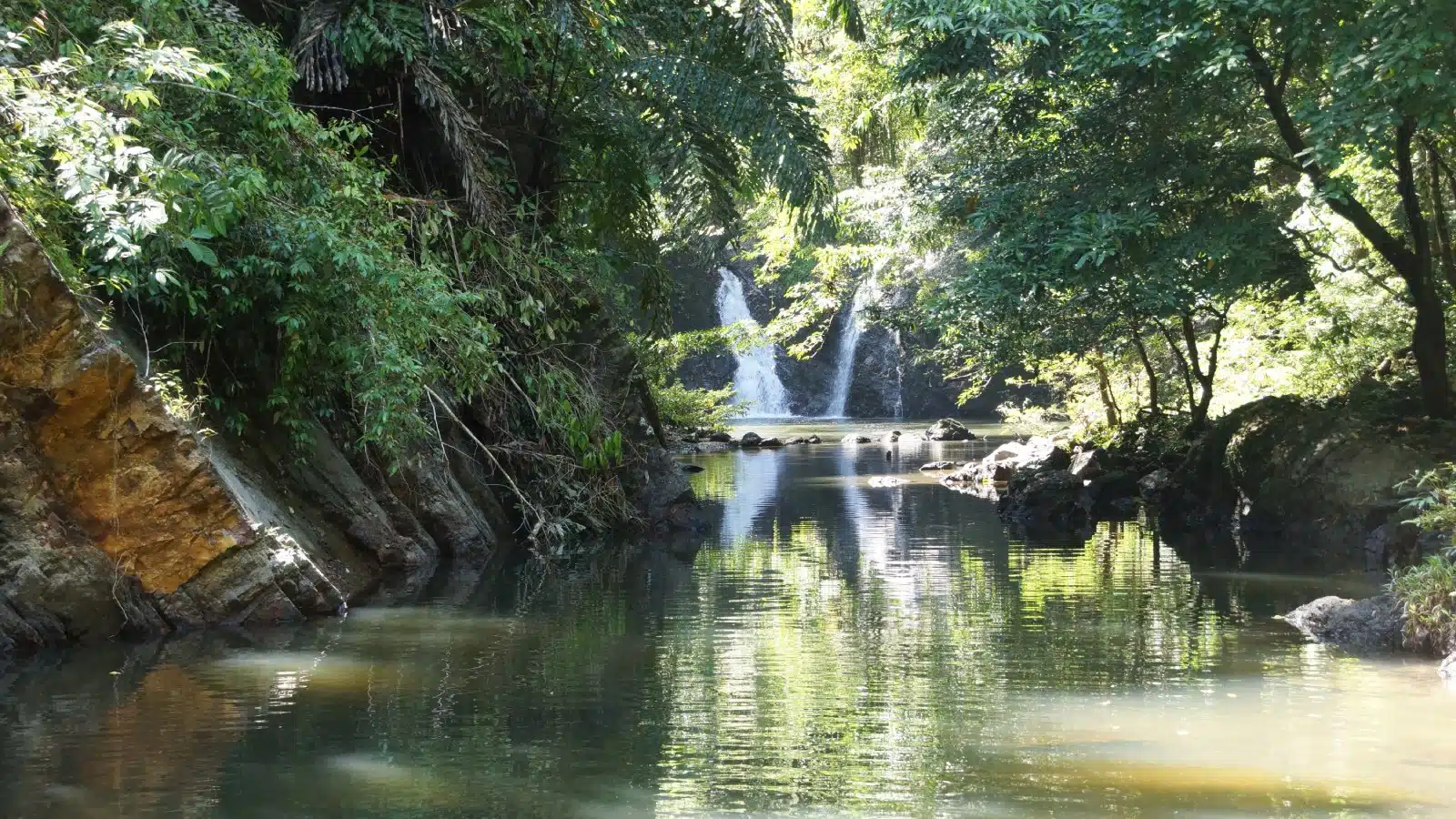
Image Credit: Shutterstock / Craig Ansibin
Tabin Wildlife Reserve, located in the eastern part of Sabah, Malaysia, is a sanctuary dedicated to preserving Borneo’s endangered species. Spanning over 1,200 square kilometers, this vast reserve is a mosaic of lowland dipterocarp forests, providing a critical habitat for diverse wildlife. It is particularly renowned for its population of Bornean elephants, Sumatran rhinoceroses, and various bird species. The reserve’s mud volcanoes and saltwater springs are unique geological features that attract animals for their mineral-rich deposits, offering visitors rare opportunities for wildlife observation. Tabin is a center for conservation research and efforts to rehabilitate and release endangered species back into the wild. The immersive experience of staying in the reserve allows visitors to connect with the natural world and gain insights into Borneo’s wildlife conservation challenges.
Insider’s Tip: Embark on a guided night safari to spot the reserve’s elusive nocturnal creatures, including leopard cats and civets.
When to Travel: Wildlife viewing is best during the dry season from March to October.
How to Get There: Tabin Wildlife Reserve is accessible from Lahad Datu, with flight connections from Kota Kinabalu to Kuala Lumpur.
7. Deramakot Forest Reserve
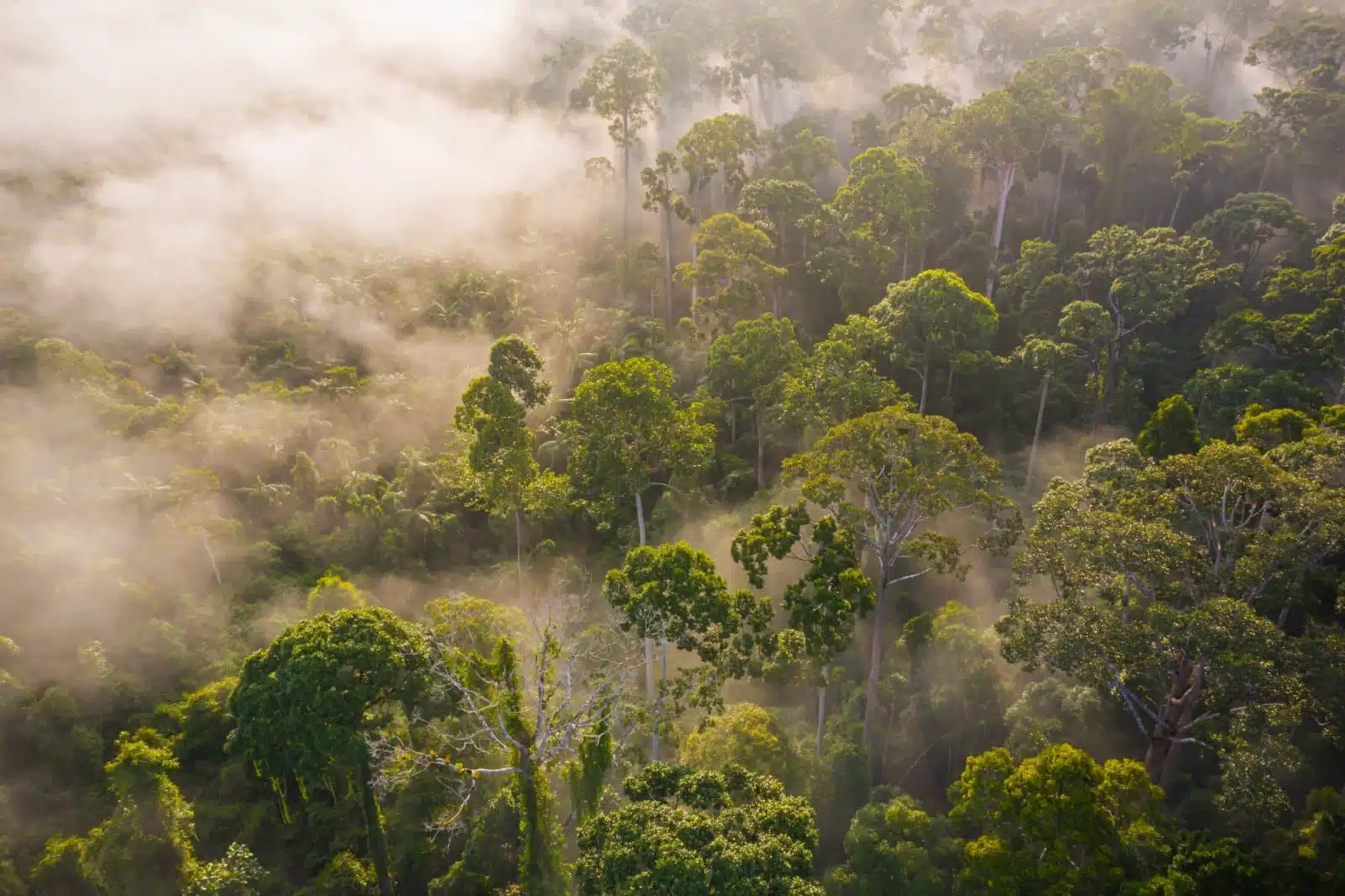
Image Credit: Shutterstock / BorneoRimbawan
Deramakot Forest Reserve is a testament to sustainable forest management and wildlife conservation. Covering an area of over 550 square kilometers in Sabah, Malaysia, Deramakot is the first tropical rainforest in the world to be certified for its sustainable logging practices. This reserve is a haven for wildlife enthusiasts, offering some of the best chances to observe Borneo’s elusive species, such as the clouded leopard, Bornean pygmy elephant, and orangutan, in their natural habitat. Its flora and fauna diversity makes Deramakot an exceptional location for nature photography and wildlife research. The reserve’s commitment to conservation and sustainable use of forest resources serves as a model for forest management worldwide, highlighting the balance between human use and preserving biodiversity.
Insider’s Tip: Opt for a multi-day tour with experienced guides to maximize your wildlife spotting opportunities, especially for nocturnal species.
When to Travel: The period from March to October is ideal for visiting, with clearer skies and less rain.
How to Get There: The reserve is best reached from Sandakan or Kota Kinabalu, with overland transport arranged through tour operators.
8. Gomantong Caves
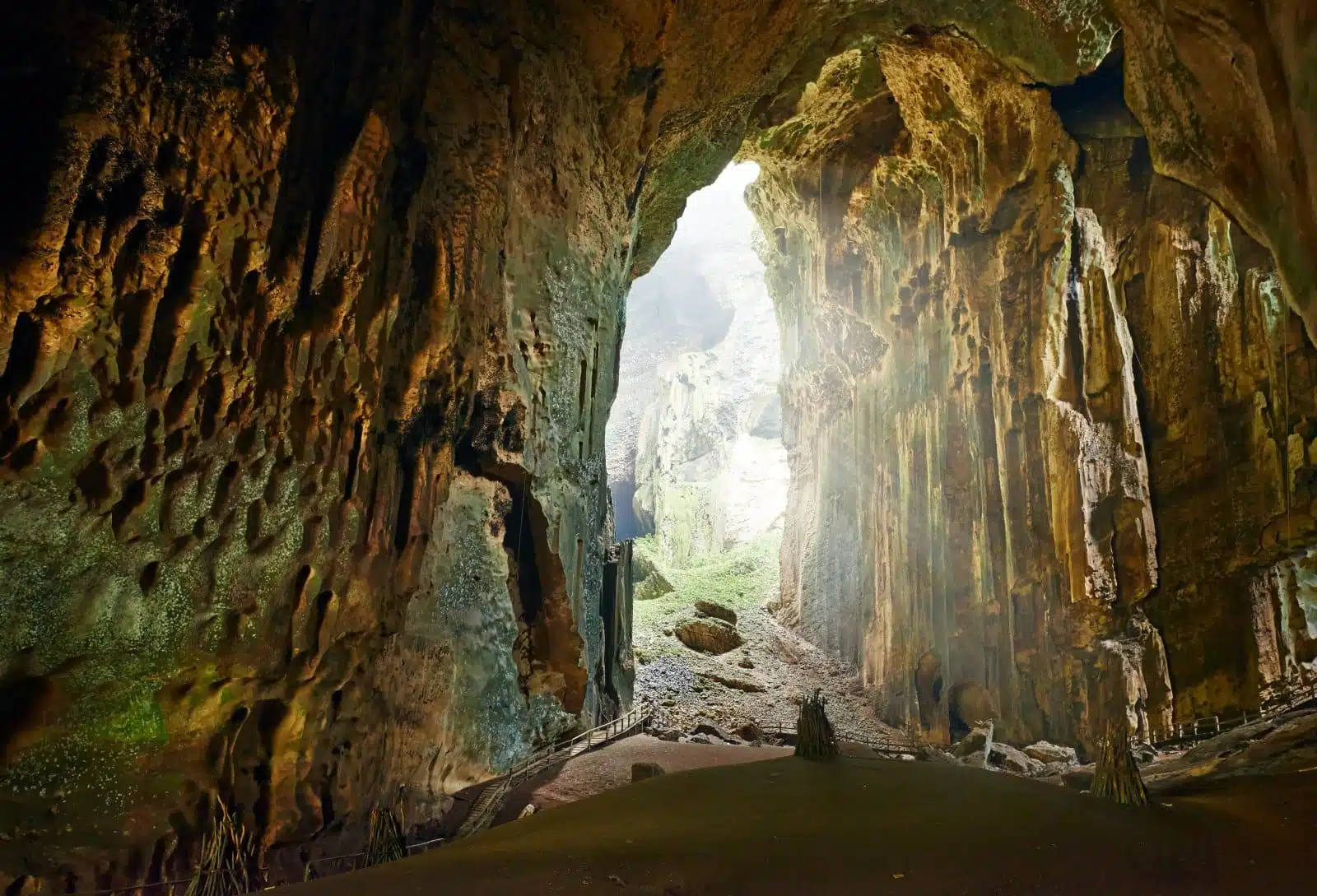
Image Credit: Shutterstock / soft_light
Situated within the Gomantong Forest Reserve in Sabah, the Gomantong Caves are an intricate cave system known for their significant role in the local ecosystem and economy. The caves are famed for being the site of the swiftlet bird’s nests, harvested for the delicacy bird’s nest soup. This complex of limestone caves is divided into two main parts: Simud Hitam (Black Cave) and Simud Putih (White Cave), each named for the color of the nests. Beyond their economic importance, the caves are a biodiversity hotspot, home to various unique cave-dwelling species, including bats and insects, which play a crucial role in the nutrient cycle of the surrounding forest. Visiting the Gomantong Caves offers a glimpse into the fascinating interplay between human culture and natural history, set against Borneo’s ancient rainforests.
Insider’s Tip: Wear appropriate footwear, as the cave floors can be slippery and muddy, especially during the nest-harvesting season.
When to Travel: The dry season from March to September is the best time to visit, avoiding the heavier rains that can flood the caves.
How to Get There: The caves are located southeast of Sandakan, with access via road. Tours can be arranged from Sandakan or Kota Kinabalu.
9. Batang Ai National Park
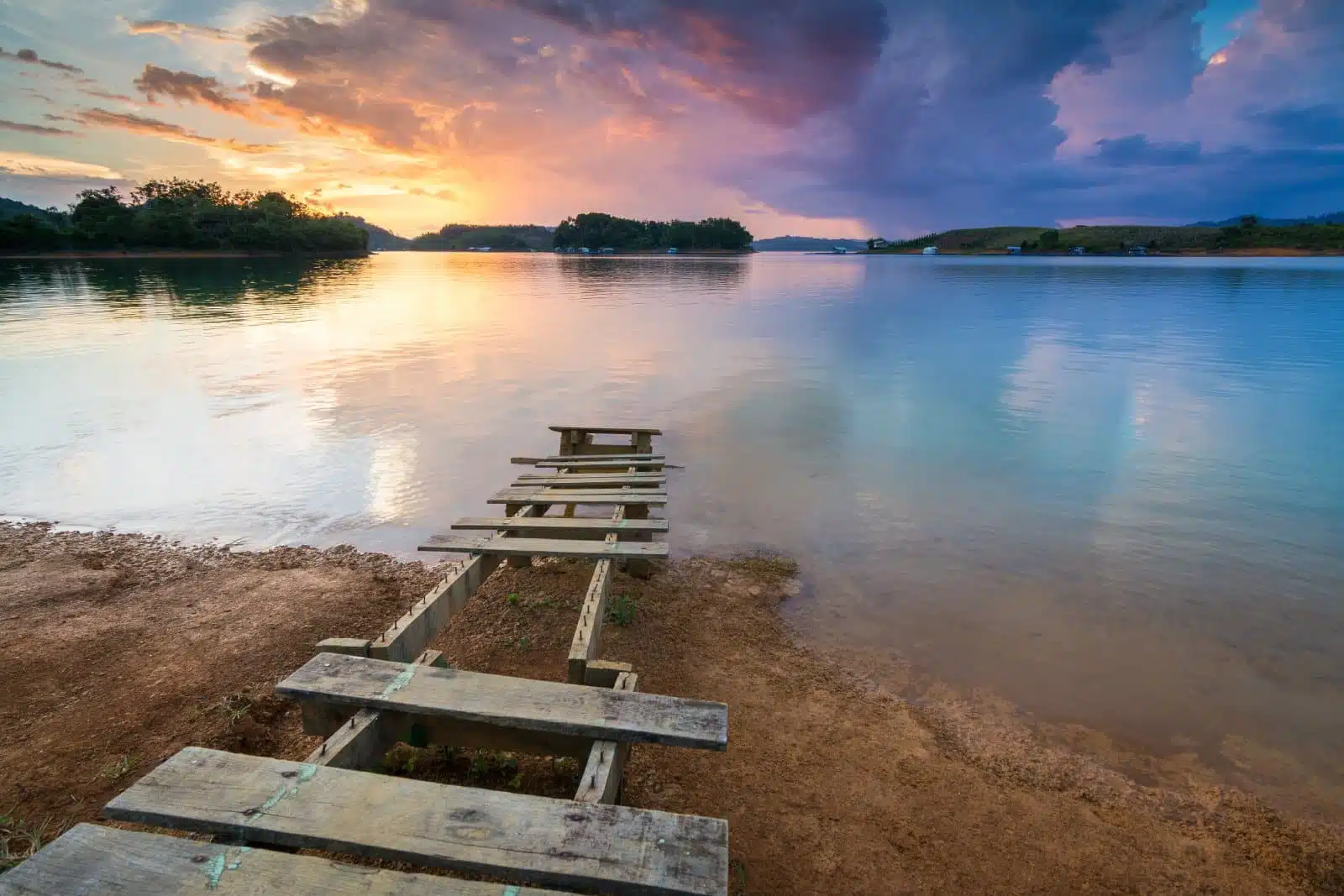
Image Credit: Shutterstock / Abang Faizul
Batang Ai National Park, located in the Malaysian state of Sarawak, is a protected area that offers a unique blend of natural beauty and cultural heritage. The park is part of a larger conservation zone that includes the Batang Ai Reservoir and surrounding rainforests, serving as a crucial habitat for Borneo’s endangered orangutans. Beyond its conservation efforts, Batang Ai is home to traditional Iban longhouses, where visitors can experience the hospitality and rich cultural traditions of one of Borneo’s largest indigenous groups. The park’s lush landscapes, teeming with diverse flora and fauna, provide ample opportunities for jungle trekking, wildlife spotting, and cultural immersion. Batang Ai stands as a model for community-based conservation, where protecting natural resources goes hand in hand with preserving cultural heritage.
Insider’s Tip: Participate in a traditional Iban longboat ceremony to gain a deeper understanding of the cultural significance of the river and rainforest to the Iban community.
When to Travel: The best time for cultural experiences and wildlife viewing is during the dry season from April to October.
How to Get There: Access to Batang Ai typically involves a drive from Kuching, which can take several hours, followed by a river journey to the more remote longhouses and park areas—travelers often book tours that handle all logistics, including transportation and accommodation.
10. The Heart of Borneo
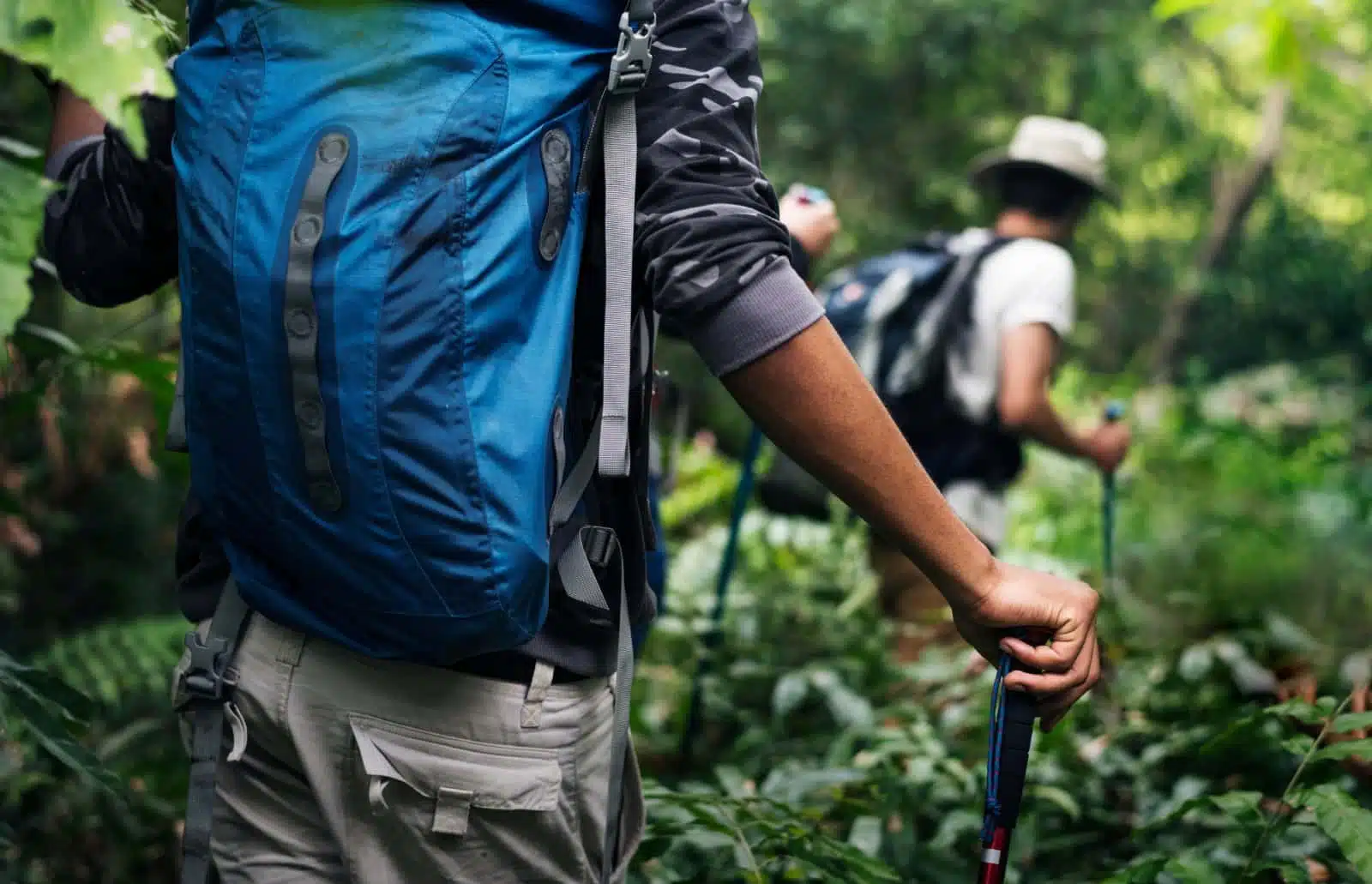
Image Credit: Shutterstock / Rawpixel.com
The Heart of Borneo initiative represents an ambitious international effort to conserve one of the planet’s most important centers of biodiversity. This vast area, spanning the borders of Malaysia, Indonesia, and Brunei, encompasses many of Borneo’s remaining rainforests. The initiative aims to protect the ecological integrity of this region while promoting sustainable development and livelihoods for local communities. The Heart of Borneo is a haven for countless species, including many that are endemic and endangered, such as the Bornean orangutan, the pygmy elephant, and the rhinoceros hornbill. For travelers, the Heart of Borneo offers an unparalleled opportunity to explore some of the world’s most pristine and untouched wilderness areas, where the sheer diversity of life reminds us of the importance of conservation and the role each of us plays in preserving our planet’s natural heritage.
Insider’s Tip: For those looking to contribute to conservation efforts while experiencing the Heart of Borneo, consider joining a volunteer program or eco-tour that supports local communities and sustainable tourism practices.
When to Travel: The best time to explore the Heart of Borneo is during the drier months, typically from March to October, when access to more remote areas is easier and wildlife viewing opportunities are at their best.
How to Get There: Given its vast coverage, the Heart of Borneo entry points vary. Key access cities include Kota Kinabalu in Sabah, Kuching in Sarawak, and Balikpapan in East Kalimantan. Specialized tours can take you deeper into the conservation areas from these locations.
The Bottom Line

Image Credit: Shutterstock / Arnain
The jungles of Borneo offer a rare glimpse into a world where nature reigns supreme, showcasing the planet’s incredible biodiversity and the importance of conservation. From the serene waters of the Kinabatangan River to the ancient depths of the Danum Valley and the cultural richness of Batang Ai, Borneo presents a tapestry of experiences that connect travelers with the earth’s most primal beauty. As you venture into these jungles, remember to tread lightly, respecting the delicate balance of these ecosystems and the communities that call them home. Your journey through Borneo’s jungles is more than an adventure; it’s an opportunity to witness the enduring power of the natural world and the critical importance of preserving it for generations to come. Embrace the call of the wild, and let Borneo transform your understanding of our planet’s precious wonders.
More From The Green Voyage
Top 10 Trending Travel Destinations 2024
6 Essential Banking Apps for International Travel – Managing Your Finances on the Go
Traveling With Kids – 10 Tips to Create Memorable Family Holidays
The post The Diverse Jungles of Borneo 2024 first appeared on The Green Voyage.
Featured Image Credit: Shutterstock / Lucia Romero.
For transparency, this content was partly developed with AI assistance and carefully curated by an experienced editor to be informative and ensure accuracy.
Tips for Trip Success
Book Your Flight
Find an inexpensive flight by using Kayak, a favorite of ours because it regularly returns less expensive flight options from a variety of airlines.
Book Your Hotel or Special Accommodation
We are big fans of Booking.com. We like their review system and photos. If we want to see more reviews and additional booking options, we go to Expedia.
You Need Travel Insurance!
Good travel insurance means having total peace of mind. Travel insurance protects you when your medical insurance often will not and better than what you get from your credit card. It will provide comprehensive coverage should you need medical treatment or return to the United States, compensation for trip interruption, baggage loss, and other situations.Find the Perfect Insurance Plan for Your Trip
